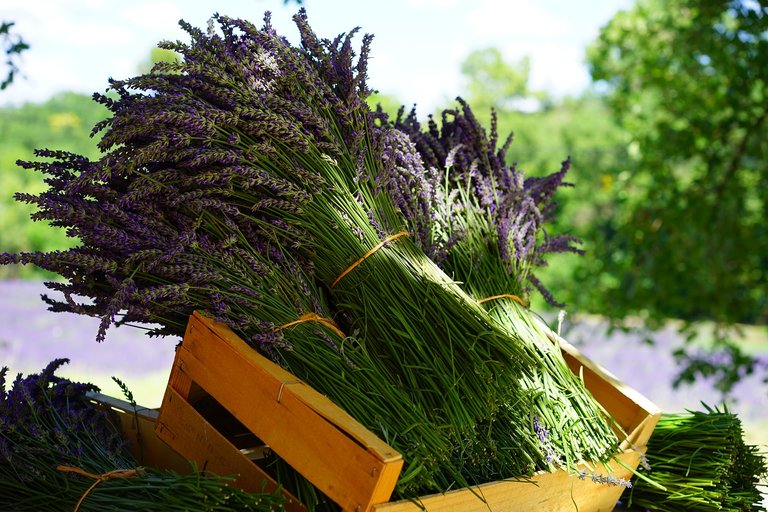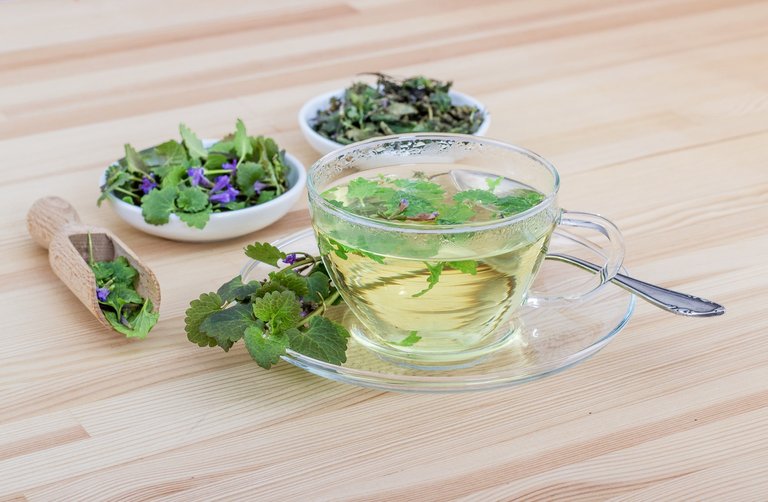Medicinal Herbs are plants that contains substances in their leaves, stems, fruit, flower or roots which can be used for therapeutic purposes and may also serves as precursors for the synthesis of some useful drugs. Medical herbs contains chemical substances known as phytochemicals which act upon the body to trigger physiological changes. Herbal medicine has become an integral part of the development of modern civilization, it is also an important parts of culture and tradition of Asian and African people. Today is some part of Africa and Asia continent most of the people in rural and urban areas make use of herbal medicine for their health care needs since herbal medicine are generally accessible and not expensive, they are affordable. Due to this, there has been increasing trend across the globe to integrate herbal medicine into primary health care system.
 source
source
According WHO, stated that four (4) billion people which is about 80% of the world population presently make use of herbal medicine for some aspect of primary health care. WHO further noted that of 119 plant-derived pharmaceutical medicines, about 74% are used in modern medicine production in ways that correlated directly with their traditional uses as plant medicines by native cultures.
Medicinal plants can be in form of microscopic, jutes, spices, food, perfumery plants, actinomycetes use for isolating drugs like antibiotics, fibre plants, and flax. One of the typical example of medicinal herb used in Nigeria, and has made contributions to the the health of the people and will still continue to make great impact of health is the Nigeria flora.
Much of these Medicinal herbs uses have been developed and put to uses through the observations of wild animals, many trials and error or ‘Doctrine of signature’ which is a concept which was used by the herbalist of Renaissance period which establishes that any plant part which resembles the organs of human body id created for the cure of the ailments of that organs of the body. For example Fadogia agrestis (Barkin gaigai-Hausa) which looks like the male organ is used in managing male sexual dysfunction like disorders of libido and erectile dysfunction. Teas extracted in various forms for their natural chemical constituents are used as first solution or treatments for poor health and chronic disease conditions a typical examples of that is the green tea. Also Vincristine. Which is anti-cancer agent was derived from Vinca rosea while Artemisinin for anti-malaria was extracted and formed out of Artemesia annua. Some of the medicinal herbs are prepared in form of food, vegetables and spices.
This days, the value and the pride of most of the medicinal herbs are being thrown away due to lack of awareness, deforestation, urban development, pollution, drought and overuse. In folk medicine, different plants because of the several phytochemicals they contain they are now been explored for the management of several diseases such as hasten labour, bronchitis, communicable diseases, inflammation, gonorrhoea, catarrhal, cough, rheumatism, antipyretic, conception prevention, enhance sex and fertility, convulsion, epilepsy cardiovascular diseases, insect bite, snake bite, burns, wounds, hernia, skin diseases like rashes, dysentery, pile and many more.
Reasons for using Medicinal herbs
Many people use medicinal herbs to treat all kind of ailments for several reasons. The following are the reasons why people make use of medicinal herbs:
Traditional or cultural Preference:
Many people living in the rural parts of the world have solid faith in using traditional medicine, most especially the inexplicable aspects of medicinal herbs just because they believe that it is the wisdom of their fore-fathers. The respect for the wisdom of their fore-fathers which also integrate their social-cultural and religious backgrounds make people to indulge in herbs. Medicinal herbs are therefore used on the advice and information obtained from relatives and friends.
 source
source
The belief that medicinal herbs are less expensive and safer-
Because most people dwelling in the rural are most of the time find it difficult to access orthodox medicine where such exists, the increase in cost of imported medicines has also contributed a big problem. Therefore, many rural dwellers make use of the alternatives which is the herbal remedies as a way of combating the high cost of prescription medication.
The fact that herbs grow naturally makes it to be easily accessible and affordable in low-income countries. It is estimated that about 75% of the populace still prefer to solve their health challenges with medicinal herbs. Some people also have this believe that medicinal herbs are safer to use simply because they are natural. Research has however shown that some of these herbs are indeed not safe even at their acclaimed therapeutic doses. For example, garlic may cause excessive bleeding while Pausinystalia Yohimbe can results in hypertension and increased heartbeat.
Preference for Personal Involvement in the decision making process
Some people prefer to take medicinal herbs because they have their faith attached to it, accompanied with strong evidence in the herb sellers or native doctors commonly in Africa region.
Significant side effects and risk associated with conventional therapies
The use of modern medicines of synthetic origin which is believed to impact dramatic results within a short time also has a hidden drawback of serious afterwards consequences. The side effects of drugs such as headache, hypertension and even sudden cardiac failure as with some drugs like yohimbine and Viagra, may force people to look for herbs as alternative.
The fallacious believe that herbal products are superior to manufactured products
It is not enough to say that more people are now developing interest in traditional medicine, but the truth is that more people in Africa and Asia are even patronizing natural herbs and medications despite different avalanche or brand of orthodox medications, and no amount of discouragement from anybody either medical doctors or otherwise could stop people from doing so. This is because natural medicine is now seen as the last hope of many people including those in the developed countries of the world like Canada, Asia, Europe and America. Most users may be a major contributing factor influencing the sustained and increasing popularity of herbs.
 Source
Source
Myths & Facts
Myths about herbs are famous beliefs or stories that are attatched with medicinal herbs especially one considered to features cultural ideal. It is also an explanation which is widely held but untrue and unproven. Myth is often interchangeable with legend or allegory and may be associated with religious or cultural beliefs. Feelings or practice. Some of the common myths and facts about medicinal herbs are as discussed below:
Multiherbal Therapy
Most herb sellers’ use as many as between 6 to 14 plants for given disease condition which claim that some herbs will reduce symptoms of the diseases while others will improve digestion and absorption of the remaining herbs. It is mostly common among rural dwellers to combine several herbs which are claim to have particular curative properties, whereas only one or some of the combined herbs may be containing the active ingredient for the particular diseases. For example, herbs like Azadiracta indica (Neem), Lymbopogan citractus (Lemon grass), and Psidium guasava (Guava) leaves are always combined together for treatment of malaria fever. However, research has reported that only Neem contains the active substance against plasmodium parasite, while the role of lemon grass is as a flavouring agent to reduce bitterness and that of guava is to increase rate of urine excretion so as to prevent the accumulation of Neem in the body system.
While the above may be true, many other herbal medicine advocates propose that the therapeutic benefit of herbal products stems from the synergistic action of several natural components in the herbs. Some constituents that thought to be inactive may actually play a role in the pharmacokinetics of the active component. No evidence is available presently that is supporting or refuting this argument.
Misidentification of herbs
Medicinal plants which include barks, stem, bulbs, roots and leaves are dried and sold as semi and processed products. These product are seldom labelled but bulk stock may be identified in local names and packaging is rudimentary.
Safety
How safe are herbs?
Many consumers use herbs as self-care because there is a wide misconception that ‘natural’ means ‘safe’. Many forget that herbs are drugs since they contain many chemicals. Just because something is natural does not mean that we should be lured into false sense of security. Plants commonly used in traditional medicine are assumed to be safe. This position is based on the long usage in the treatment of diseases according to knowledge accumulated over the centuries. However, research as shown that many plants used as food or in traditional medicine are potentially toxic, mutagenic or carcinogenic.
quality and Control Standardization of medicinal herbs
Due to reliance on medicinal herbs, there is the need in accordance with WHO to ensure quality control of these herbs and its standardization. There is the claim that standardization of medicinal herbs will reduce or eliminate the beneficial effects of such plants. This, however, is yet to be substantiated. Also, the consumer has no means of knowing exactly the content and what effect the contents may have as against standard pharmaceutical drugs.
Conclusion
The use of herbs ( medicinal plants) in the management of diseases is on the increase across the globe and is becoming an integral part of the health care delivery system. This is due to its efficacies and reduced side effects which in some cases have been validated by scientific data. The use of these medicinal plants has been surrounded by myths in which some are true while others are not ans should therefore be used with caution.
Recommendations
- There is need to encourage the correct identification of medicinal herbs to avoid mistaken identity and adulteration.
- Long term use of medicinal herb should be avoided
- There is also need to promote safety and efficacy of medicinal herbs through regulatory and quality assurance standards. Herbal remedies should not be taken by infants or be used in pregnancy or during breastfeeding.
- Herbs should not be taken with drugs because of occurrence of unwanted herb/drug reactions
References
World Health Organization.(1976). African Traditional Medicine. Afro-Tech Rep. Series 1.
pp.3-4. WHO Brazaville.World Health Organization.(1977). Resolution – promotion and development of training and research in traditional medicine. WHO DOCUMENT NO 30:49.
WHO traditional medicine strategy 2002-2005. Document WHO/TRM/2002.1. extract of Fadogia agrestis (Schweinf. Ex Heirn) stem in male albino rats. Asian Journal of Andrology 7(4) :399-404.
Adesina, S.K.(2008). Traditional Medical care in Nigeria. Today Newspaper.
Our mothers always preferred the herbs to the medical drugs even though some of them are extracts from these herbs.
@omot old people prefer the traditional ways, but not all are good for our health.
Dear friend! Next time also use #wafrica and follow @wafrica to get an upvote on your quality posts!
Hello! I find your post valuable for the wafrica community! Thanks for the great post! @wafrica is now following you! ALWAYs follow @wafrica and use the wafrica tag!
Thanks